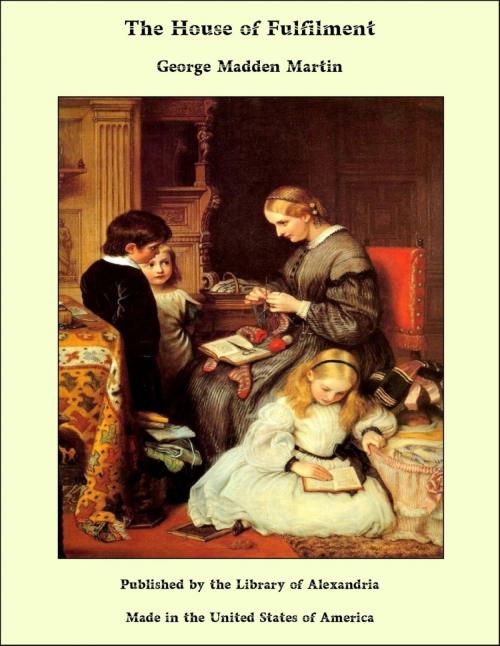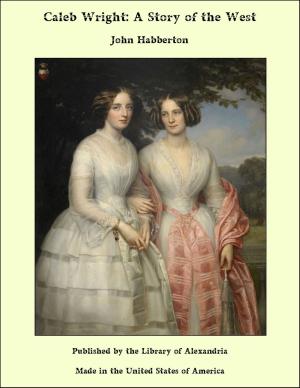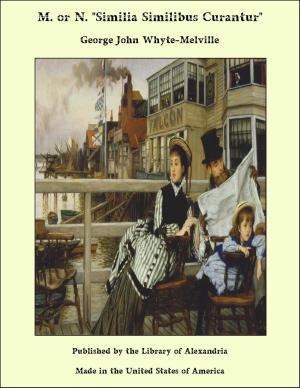| Author: | George Madden Martin | ISBN: | 9781465617798 |
| Publisher: | Library of Alexandria | Publication: | March 8, 2015 |
| Imprint: | Language: | English |
| Author: | George Madden Martin |
| ISBN: | 9781465617798 |
| Publisher: | Library of Alexandria |
| Publication: | March 8, 2015 |
| Imprint: | |
| Language: | English |
Harriet Blair was seventeen when she went with her father and mother and her brother Austen to New Orleans, to the marriage of an older brother, Alexander, the father’s business representative at that place. It was characteristic of the Blairs that they declined the hospitality of the bride’s family, and from the hotel attended, punctiliously and formally, the occasions for which they had come. It takes ease to accept hospitality. Alexander Blair, the father, banker and capitalist, of Vermont stock, now the richest man in Louisville, was of a stern ruggedness unsoftened by a long and successful career in the South, while his wife, the daughter of a Scotch schoolmaster settled in Pennsylvania, was the possessor of a thrifty closeness and strong, practical sense. Alexander, their oldest son, a man of thirty, to whose wedding they had come, was what was natural to expect, a literal, shrewd man, with a strong sense of duty as he saw it. His long, clean-shaven upper lip, above a beard, looked slightly grim, and his straight-gazing, blue-grey eyes were stern. The second son, Austen, was clean-featured, handsome and blond, but he was also, by report, the shrewd and promising son of his father, even as his brother was reported before him. Harriet, the daughter, was a silent, cold-looking girl, who wrapped herself in reserve as a cover for self-consciousness but, observing closely, thought to her own conclusions. She had a disillusioning way of baring facts in these communings, which showed life to her very honestly but without romance or glamour. At the wedding, sitting in her white dress by her father and mother in the flower-bedecked parlours of the Randolphs, Harriet looked at her brother, standing by the girl of seventeen whom he had just married, and saw things much as they were. In Molly, the bride of an hour, with her child’s face and red-brown hair and shadowy lashes, she saw a descendant of pleasure-loving, ease-taking Southerners. Molly’s father, from what Austen had said, was the dispenser of a lavish and improvident hospitality and a genial dweller on the edge of bankruptcy, while the mother, a belle of the ’40’s, some one had told the Blairs, seemed just the woman to marry her only child to a man opposed to her people in creed, politics and habits—which in 1860 meant something—but son of one of the richest men in the South.
Harriet Blair was seventeen when she went with her father and mother and her brother Austen to New Orleans, to the marriage of an older brother, Alexander, the father’s business representative at that place. It was characteristic of the Blairs that they declined the hospitality of the bride’s family, and from the hotel attended, punctiliously and formally, the occasions for which they had come. It takes ease to accept hospitality. Alexander Blair, the father, banker and capitalist, of Vermont stock, now the richest man in Louisville, was of a stern ruggedness unsoftened by a long and successful career in the South, while his wife, the daughter of a Scotch schoolmaster settled in Pennsylvania, was the possessor of a thrifty closeness and strong, practical sense. Alexander, their oldest son, a man of thirty, to whose wedding they had come, was what was natural to expect, a literal, shrewd man, with a strong sense of duty as he saw it. His long, clean-shaven upper lip, above a beard, looked slightly grim, and his straight-gazing, blue-grey eyes were stern. The second son, Austen, was clean-featured, handsome and blond, but he was also, by report, the shrewd and promising son of his father, even as his brother was reported before him. Harriet, the daughter, was a silent, cold-looking girl, who wrapped herself in reserve as a cover for self-consciousness but, observing closely, thought to her own conclusions. She had a disillusioning way of baring facts in these communings, which showed life to her very honestly but without romance or glamour. At the wedding, sitting in her white dress by her father and mother in the flower-bedecked parlours of the Randolphs, Harriet looked at her brother, standing by the girl of seventeen whom he had just married, and saw things much as they were. In Molly, the bride of an hour, with her child’s face and red-brown hair and shadowy lashes, she saw a descendant of pleasure-loving, ease-taking Southerners. Molly’s father, from what Austen had said, was the dispenser of a lavish and improvident hospitality and a genial dweller on the edge of bankruptcy, while the mother, a belle of the ’40’s, some one had told the Blairs, seemed just the woman to marry her only child to a man opposed to her people in creed, politics and habits—which in 1860 meant something—but son of one of the richest men in the South.















